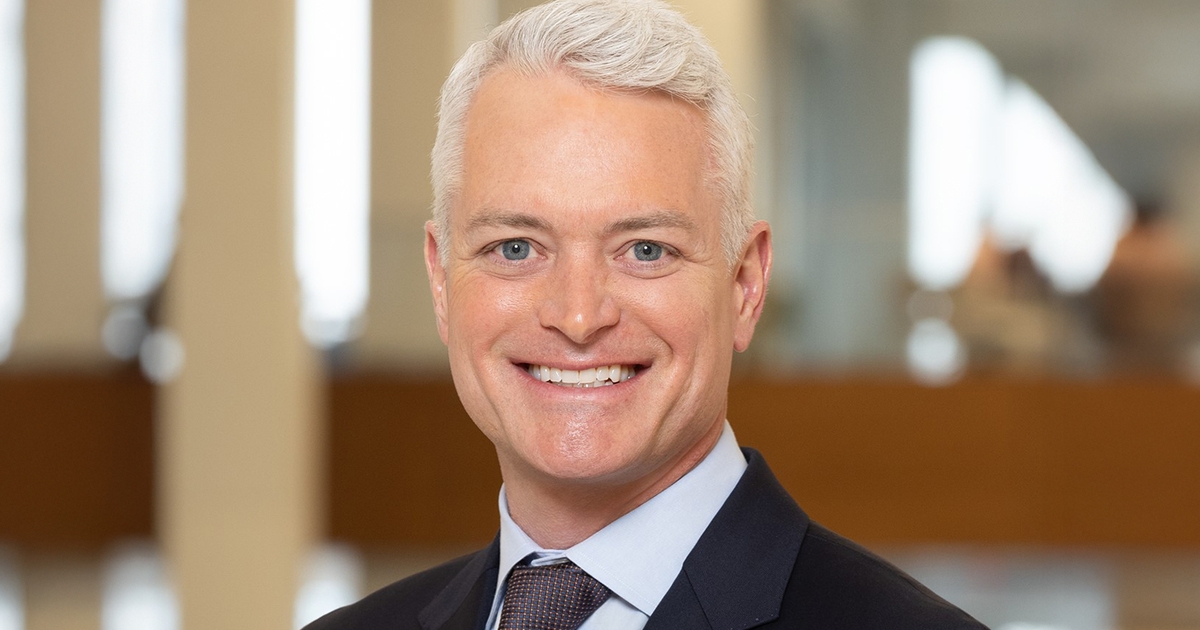Tailoring Strategies for Savvy Clients


When we think of a typical wealth management client, there is often an assumption that the client, while savvy, still knows less about investment strategies than the financial advisor serving them. However, in the case of Citi Global Wealth at Work, a division of Citi Wealth established in 2021, that’s often not the case.
Among the people Citi Global Wealth at Work serves are lawyers, accountants, private equity professionals, venture capital executives and asset managers. These clients are quite savvy about investment management, but may not have the time or inclination to do it for their own portfolios. Or they may be held back by professional conflicts of interest, according to Mike Remak, head of investments for the firm. WealthManagement.com recently spoke to Remak about its approach to wealth management for people who are already well-versed in investments.
This Q&A has been edited for length, style and clarity.
WealthManagement.com: Can you give me a sense of who your typical client is?
Mike Remak: The clients that we are typically serving are professionals in industries such as law and management consulting and asset management. We also work with senior professionals at fast-growing companies in industries like tech and healthcare. The people that we serve tend to have a wealth profile that can be defined as high-net-worth to ultra-high-net-worth. They also tend to be highly educated and very savvy, but have limited time and bandwidth to focus day-to-day on their investments.
WM: What’s in your model portfolio right now?
RM: If we were to segment risk on a scale of 1 to 5, 1 being very conservative and 5 being very aggressive, we would think of a moderate, risk level 3 portfolio is ideally having around 36% exposure to bonds, 36% exposure to stocks, 27% exposure to alternative investments and 1% exposure to cash.
WM: Can you talk about what kinds of equities you are gravitating toward right now?
RM: Because the clients that we serve are largely looking to outsource their wealth management, as opposed to being self-directed, many of them are subject to independence restrictions or conflicts of interest from what they do for a living. Most of them are looking for discretionary managed solutions. So the way we are building equity portfolios is with a U.S. home bias and with a large cap bias. [That’s] primarily because given economic conditions today, we believe that with a lot of trade policy uncertainty lingering, for example, large-cap tech should continue to be one area of the market that is more resilient. Whereas small-cap companies might be more susceptible to disruption that could occur from a trade perspective.
Within U.S. large caps, we tend to be relatively indifferent as it relates to active vs. passive. We certainly have a broad menu of solutions available in both categories, but one thing I will say is pervasive is there is increasing investor appetite for tax efficiency. Whether we are managing an active stock picker strategy that is intended to outperform its benchmark or really just looking at index replication and returns that match the benchmark on a pre-tax basis, our clients are increasingly wanting or demanding active tax loss harvesting within their equity portfolios.
Within international, which is certainly important within an overall portfolio, we are strong advocates of having global diversification. That’s certainly been helpful in terms of portfolio returns this year. There, we think there is a stronger case for active management and a stronger case for managers who have a proven track record for picking individual companies. That’s for a variety of reasons. One, emerging markets tend to be a little bit more opaque; therefore, having a research-driven approach and being more selective is important. But even regions such as Europe, which are growing more slowly, you may not necessarily want to own the whole market. You may want to be more selective and pick individual companies that are growing and trading at a healthy valuation discount relative to comparable U.S. companies.
WM: What types of investments are you making on the fixed-income side?
RM: If we think about that 36% allocation to fixed income, that largely should be allocated to safe sleep-at-night assets. For most U.S.-based tax-paying individuals, that would be investment-grade municipal bonds, where default rates are extremely low. This is an attractive space in terms of one’s ability to generate an attractive, tax-advantaged yield. The taxable equivalent yield today on investment-grade intermediate duration municipals is right around 6%. If you happen to live in one of those very high-tax states, like California or New York, the taxable equivalent yield is as high as about 7.5%. That really is going to comprise the majority of the portfolio.
Within that portfolio, at the moment, given the shape of the yield curve, we are going to keep the duration relatively short. Again, the keyword here for that portion of the portfolio is “safety.” But we would recommend complementing that with more flexible, actively managed fixed-income strategies that can be more opportunistic, that can pivot between public and private markets, or even go to cash if the portfolio manager feels that it’s the right move. And we are seeing in some of those flexible, more diversified credit strategies that the yields are generally in the low double digits. We think that’s a nice complement to what should be largely a safe bond portfolio.
WM: What’s the primary purpose for the 1% cash allocation?
RM: We maintain a 1% allocation to cash mainly for liquidity and rebalancing purposes, it serves more of a utilitarian function in a portfolio. We can and would increase that 1% allocation on a tactical basis if we felt market conditions warranted it, but it’s mainly there for operational maintenance of the portfolio.
WM: How often do you typically change your asset allocations? Have you changed them significantly in the past six months?
RM: Strategic allocation should align with a client profile, but we do believe in a tactical approach and actively over- or underweighting certain asset classes based on market conditions. Our global investment committee meets on a monthly basis, and we publish to our clients any recommendations in terms of those tactical overweights or underweights, and we do reflect those views actively in our model portfolios.
At our last global investment committee meeting, we maintained a neutral position, which is not having any tactical overweights or underweights. It’s really a reflection of the high level of uncertainty that still hangs over markets, both from a trade policy perspective, but also from a Fed policy perspective. It seems increasingly likely that the Fed will have to pause on any further rate cuts for the time being.
WM: You mentioned CitiWealth does have an alts allocation. Can you tell me which alternative asset classes you are invested in?
RM: Within that 27% allocation, we would bucket that into a 15% allocation to private investments. We look at that as roughly 10% in private equity and private credit, roughly 5% in real estate and infrastructure, and then 12% exposure to hedge funds.
Starting with hedge funds, we tend to think of them as either being directional, these are hedge funds that are really intended to enhance returns, or diversifying, strategies that tend to offer lower correlation to equity and fixed income. We do implement both of those types of strategies. I would say that increasingly our clients are looking for diversifying strategies that can provide a bit of downside risk protection when markets are risk-off. We saw that it was obviously very helpful earlier this year, around the Liberation Day market sell-off.
The other thing I would say is that quantitative hedge fund strategies that can deliver the additional benefit of tax losses are picking up a lot of steam. We’ve seen a lot of inflows over the course of the past six or 12 months into hedge fund strategies that are both diversifying and generate active tax loss harvesting and net capital losses at year-end.
Within private markets, obviously, private equity and private credit have demonstrated a strong potential to outperform public equity and fixed income markets over the long run. Within private equity, we are looking for strategies across the range, from venture capital to larger buyout, as well as some very specialized types of private investment strategies.
Private investments into sports franchises would be an example, or private investments into owning a GP interest in private equity firms themselves. It’s a pretty broad range; the one thing that has been game-changing and will continue to be front and center for wealth managers is that there are some complications in trying to build out, achieve and maintain a private equity allocation with traditional drawdown structures. So, this proliferation of semi-liquid and evergreen strategies is making it that much easier for retail investors to build out and maintain that private equity allocation. We are increasingly filling our private equity portfolio with a combination of traditional drawdown structures, as well evergreens.
Another thing I would mention is that on the real estate side of things, there is an increasing investor appetite to own some infrastructure. We think about infrastructure as those essential services that we need every day, like having the ability to turn on your mobile phone and get a signal or go to your water faucet and turn up the tap and make a pot of coffee in the morning. All of that infrastructure that enables our day-to-day lives does offer some benefit for investors in terms of providing an inflation hedge, providing some diversification, as well as potentially providing some long-term growth. We think building a little bit of that into a real estate allocation makes sense.
WM: Investing in sports franchises seems to be a relatively new area for wealth managers, and the current rules can make it tough for individual investors to participate in. Can you talk about how you access that market on behalf of your clients?
RM: There is an analog here to Opportunity Zones—these are areas where we think it’s incredibly important to pick your spots. It’s going to make a material difference whether or not you are with leading sponsors who have a demonstrated track record or level of access in that space. Because, for example, investing in sports franchises is a newer phenomenon that’s been enabled by those sports organizations opening up and allowing third-party capital, there is still a narrow field of players out there. Fortunately, through our private equity research and investment management effort, we have aligned ourselves to at least one of the leading sponsors in that space. It’s still an area where most investors are not going to have access, but where Citi clients are going to have exclusive access to some of the best opportunities.
WM: Can you dive deeper into how you choose the asset managers you work with? You mentioned a good track record in their investment field. What are some other factors that go into your decisions?
RM: From an investment manager research standpoint, obviously, understanding people, process and track record is really important. There is an additional body of research that we support that sits independently from the investment due diligence. We call it operational due diligence. Operational due diligence is understanding the infrastructure, the controls, the governance, the transparency and having a view that these are credible, sustainable businesses, in addition to being great investment firms.
Having investment manager research and then independently operational due diligence has served us well in terms of being able to maintain a high-quality roster of third-party managers.
The one other thing that’s unique to Citi, and this is more specific to private assets, is that it does start with a thematic approach. We always in private investment opportunities start with a view of, “Based on what we are seeing around the world, trends, dislocations, opportunities, what do we think are the investment themes that should drive outsized returns?” Then we are going to use that thematic imperative to find sponsors or managers that really excel in that particular space. Many times, we are structuring with those sponsors’ or managers’ unique vehicles that aren’t broadly available in other places. We are working on a bespoke strategy to explore one of those themes. And for that reason, roughly 70% of the private investment opportunities that we bring to market in drawdown structures are exclusive to Citi.
WM: Do you have any focus on investments with ESG themes or what some people call “responsible investing”? Are you seeing demand from clients for those types of investments?
RM: We have a global sustainable investment team that works as part of Citi Wealth and that team leverages an extensive amount of research—external research, proprietary research, including even a large body of securities research from Citi’s institutional side to be able to equip clients with opportunities and information they can use to express their views in portfolios. I think this is an area where Citi is probably ahead of the industry in terms of the depth and quality of the research.
But I will say that at least for the clients I serve here in the U.S. (and we do investigate our clients’ investment preferences for their values or sustainability), I would describe the investor appetite so far as moderate. I would not describe this as an area where we are seeing a high degree of investor demand. That certainly can change over time. We do believe, however, that sustainability factors can be an important return driver in portfolios and can seek to enhance returns in addition to having the potential to positively impact society.
WM: Is there anything else that you feel is important to note about your approach to investment strategy?
RM: I think it’s a good idea for most investors, in addition to having that target allocation in a model portfolio and ensuring that’s populated with a really high-quality mix of strategies and being tax efficient, is having a little bit of an opportunistic bucket.
Most investors like to have a little bit of room to play, and we like to have a little bit of room to exploit shorter-term market opportunities that could arise in the form of a dislocation or an abnormal pricing event. So, for example, having a 5% or even a 10% allocation to opportunistic investments that don’t necessarily fit neatly into asset classes [is beneficial]. This is one area where structured notes can play a really important role. For example, when we see a spike in volatility like we did earlier this year, that increase in volatility can often drive really interesting economics in the structured space. You can use option volatility as a source of enhanced returns to drive higher yield.
We can also use that opportunistic bucket to fill some exposures to commodities when those make sense. For example, we think having a little bit of exposure to gold right now can be really helpful for a variety of reasons, including some of the macro uncertainty that we are seeing.
That’s been a good discipline to ensure that investors stay on course with their core portfolios, while still having a little bit of room to maneuver.
WM: You mentioned that because of the uncertainty, your investment committee recommendations are holding steady right now. Going forward, do you foresee any big areas of opportunity?
RM: There are a couple of things. I’ve been in the industry for close to 30 years, but early in my career, I worked in institutional investment consulting, and I learned that asset allocation is far and away the biggest driver of portfolio returns. I also started my career working in San Francisco shortly before the dot.com bubble burst, and then having lived through the Global Financial Crisis. And I learned just how important it is to have discipline and stick to that discipline. It’s not only something I know to be true, but something I experienced first-hand—people who stick to that discipline are the people who end up doing really well and coming out ahead in terms of building wealth and generating really attractive returns.
One of the biggest pitfalls I see clients falling into is this idea of market timing, trying to guess when is the right time to be in or out. We think that’s a losing proposition. More often than not, that keeps investors on the sidelines, it keeps them in cash and missing out on returns. Who would have guessed a few months ago that in July the S&P 500 would be 8% up year-to-date? You never would have thought that! So, folks who were sitting on the sidelines in cash missed out on that.
And, then I would say that investors, by and large—it’s true of our investors, it’s true for the industry—they are under-invested to alternatives. They are under-invested to private markets. I think most investors have a sufficient time horizon that they can have a reasonable allocation. That’s going to drive higher returns; it’s going to ensure that investors have broader access to economic opportunities that exist in a huge way outside of public markets. So, I think that continuing to democratize that through semi-liquid strategies to make sure that’s built into portfolios is going to be important.

What can you do if you can’t afford college? Maybe the financial aid award wasn’t enough, or you only want...

Almost all retirement-aged Americans receive some amount of Social Security income. The average monthly benefit comes in at almost $2,000...

Refinancing an MBA loan can lower interest rates but comes with trade-offs, especially if you have federal loans. However, federal...